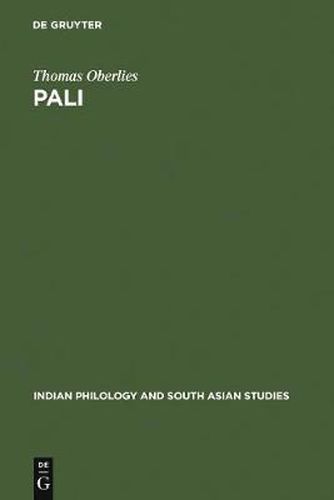Readings Newsletter
Become a Readings Member to make your shopping experience even easier.
Sign in or sign up for free!
You’re not far away from qualifying for FREE standard shipping within Australia
You’ve qualified for FREE standard shipping within Australia
The cart is loading…






This title is printed to order. This book may have been self-published. If so, we cannot guarantee the quality of the content. In the main most books will have gone through the editing process however some may not. We therefore suggest that you be aware of this before ordering this book. If in doubt check either the author or publisher’s details as we are unable to accept any returns unless they are faulty. Please contact us if you have any questions.
This text presents a full decription of Pali, the language used in the Theravada Buddhist canon, which is still alive in Ceylon and South-East Asia. The development of its phonological and morphological systems is traced in detail from Old Indic. Comprehensive references to comparable features and phenomena from other Middle Indic languages mean that this grammar can also be used to study the literature of Jainism.
$9.00 standard shipping within Australia
FREE standard shipping within Australia for orders over $100.00
Express & International shipping calculated at checkout
This title is printed to order. This book may have been self-published. If so, we cannot guarantee the quality of the content. In the main most books will have gone through the editing process however some may not. We therefore suggest that you be aware of this before ordering this book. If in doubt check either the author or publisher’s details as we are unable to accept any returns unless they are faulty. Please contact us if you have any questions.
This text presents a full decription of Pali, the language used in the Theravada Buddhist canon, which is still alive in Ceylon and South-East Asia. The development of its phonological and morphological systems is traced in detail from Old Indic. Comprehensive references to comparable features and phenomena from other Middle Indic languages mean that this grammar can also be used to study the literature of Jainism.